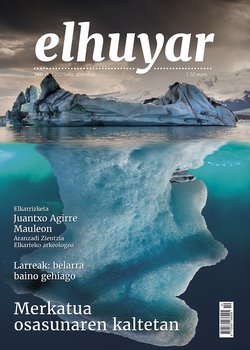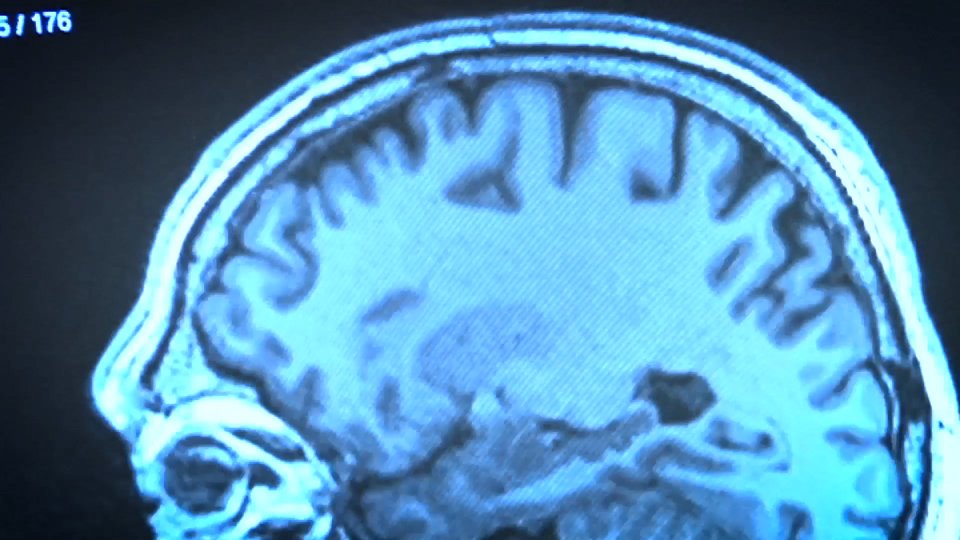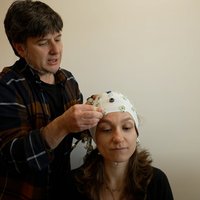The Phoenician people exposed
The Amaia cultural center has become a meeting point for decades of spectators, directors and archaeologists during the International Festival of Archaeology Week in Bidasoa. This is where we find Diego Bravo, a 54-year-old Catalan. He is the director of the documentary Tyre, one of the 37 films that have been presented
to this festival. With a long career in the audiovisual world, this is not the first time he embarks on an adventure in archaeology. This time it is about telling truths about the Phoenician
world. DIEGO BRAVO; DOCUMENTARY DIRECTOR: All the antique history has always liked me, especially the fenicia part that is a topic that is not, that is not very well documented, there are no documentaries about Fenices. The Documentary Shoot us with no
more than the theme of excavation that is being made in Albass in the area of Tyre, and it is the funerary process that makes the phenics in the aquella. We love to add a little
more to the theme of the cotidian life that is graced by excavations and others that have made it possible to know more or less as the life of the Epochal Aquelites in Tyre.
I've always liked ancient history, especially that of the Phoenician civilization. In fact, there is not much documentation on this subject; there is no documentary on the Phoenicians. The documentary
Tyre depicts the excavation being carried out in Albass, in the area of Tyre, and explains the funeral ritual that the Phoenicians performed at that time. Using data that has been discovered thanks to this and other excavations, we also wanted to talk about the daily life of the Phoenicians. The documentary is based on a necropolytic excavation launched by a group of archaeologists from the
Pompeu Fabra University in the Lebanese city of Tyre. They have been working on the film for eight months. The three-dimensional reconstructions will bring the characteristics of this ancient civilization closer to the
viewer. DIEGO BRAVO; DOCUMENTARY DIRECTOR: It supports a vision, of things and elements that are not there, but that nothing is said about it, of being grateful to the virtual reconstruction, many elements of the ship Fenicio, it is not possible to visualize it if it is not there by this technology.
It helps to provide a perspective on several elements that do not exist today. Thanks to virtual reconstructions, we have been able to represent a lot of data about Phoenician ships, something that can only be done with this technology.
Phoenicia is the name of an ancient country in the Middle East, the cradle of Phoenician and Canaanite civilizations. They lived there from the beginning of the third millennium BC, in the lands of present-day Syria, Lebanon and
Israel. MERCHE URTEAGA; ARCHAEOLOGIST: We must bear in mind that their main cities were founded in the eastern Mediterranean; there we have Tyre, Biblos, Sidon... where today the state of Lebanon is located. These cities were very close to the
sea and always took advantage of this exit, the opportunities that the sea provided. They had direct contact with the Egyptian world; at first they sold wood, the wood of their trees, the cedar, and then they used this wood to make their boats, and so they began to cross the Mediterranean Sea. It was a mountainous area, so it was not
suitable for agriculture. It gave the people a view of the sea. The Phoenicians were, above all, good navigators. They
served as intermediaries between the Western and Eastern Territories and expanded their colonies throughout the Mediterranean: From Sicily, Malta, Sardinia, and Ibiza, to Gades, located in the Iberian Peninsula, which is now the province of
Cadiz. MERCHE URTEAGA; ARCHAEOLOGIST: To emphasize, the main characteristics of the world of the Phoenicians are there: protected cities, highly protected, their later relations with the sea, the construction of ships and the commercial world. They were very skillful in repeating things and their trade was promoted in this way, replicating and selling the goods they liked throughout the Mediterranean. It was
a dynamic society, with a patriarchal
structure and they were monogamous. The society was very gradual, and among all of them the priestly caste was of extraordinary importance.
2,700 years have passed since then. These excavations in Tyre are currently being investigated by the archaeologist Maria Eugenia Aubet. discovered in 1997, this Iron Age necropolis has been the subject of extensive research on the funerary habits of the Phoenicians.
DIEGO BRAVO; DOCUMENTARY DIRECTOR: I've been working there for eight years, I've been working there now, I've found 250 enterramientos, with their urnas, with their plates, all that I see in the documentary is a typical fenicio enterramiento.
They have been working for eight years and are still there. they found 250 bodies with their boxes, plates. Everything you see in the documentary is a common Phoenician rite. As the documentary of the Catalan director
Diego Bravo explains, according to the findings of Tyre, along with the bodies, they also burned ceramics and other personal objects. The boxes full of ashes were buried individually, in pairs or in groups.
DIEGO BRAVO; DOCUMENTARY DIRECTOR: You’ll find yourself in a funeral pyre, and then you’ll find yourself in a urnas with a censer and everything, always playing the same game, as two big urnas, two basses that have a meti and perfumes, a plate and scarabs and the things of the fault.
The bodies were burned, and then the ashes were put in a box. They always behaved in the same way: in two large boxes they included perfumes,
a dish, and the sacred beetles of the deceased and other objects. Although the data collected are many, there are still thousands of doubts about this civilization to be solved. The documentary Tyre, made with three-dimensional technology, is
a reflection of the latest discoveries made around the Phoenician world. A step forward in the reconstruction of the history of this country.
Buletina
Bidali zure helbide elektronikoa eta jaso asteroko buletina zure sarrera-ontzian










